William Hemsworth's Blog, page 97
July 13, 2020
Principle Of Double Effect And Aquinas
Over the course of our lives we will be faced with many difficult decisions. These decisions may be life altering and may change us forever. In the encyclical Veritatis Splendor, Saint Pope John Paul II writes, “Acting is morally good when the choices of freedom are in conformity with man’s true good and thus express the voluntary ordering of the person towards his ultimate end: God himself, the supreme good in whom man finds his full and perfect happiness” (Veritatis Splendor para 72). In these circumstances there are right and wrong moral decisions, and the principles of double effect and material cooperation assist us in making the right decision.
Origens of Double Effect
The principle of double effect, or PDE, has its origins with St. Thomas Aquinas and is one of the best strategies in solving complex morality issues. This principle states that it is possible to make a decision that has both good and bad effects.
Just because it has both effects does not mean that it is not morally permitted. There are conditions that must be met for a decision to fall under this principle. The act itself must be good or morally indifferent. The good effect must not come from evil. Evil is not the intended result.
If evil is the effect it should be a last resort and the good effect should be equal or greater. This principle, along with material cooperation, help to make the best moral decision out of possibly the worst of circumstances.
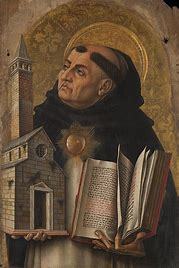 St. Thomas Aquinas
St. Thomas AquinasCategories Of Cooperation
When an individual assists in some way in wrongdoing this is called material cooperation, and there are two categories. The first is known as immediate material cooperation an individual, though they may disapproval, assists in the act. They may tolerate it, but do not approve. The second in Mediate material cooperation, and consists of proximate mediate and remote mediate material cooperation.
Proximate mediate is immoral in all cases, and may consists in the manufacturing of a device, such as Sarin gas, that is only meant for evil. Remote mediate may be permitted based on the circumstance, such as not being able to find viable employment elsewhere and having to feed your children.
In this circumstance someone may be the janitor at the factory that produces Sarin gas because employment may not be had elsewhere. This is why moral decisions should be looked at to get all the factors. Regarding this Pope John Paul II writes, “In this view, deliberate consent to certain kinds of behaviour declared illicit by traditional moral theology would not imply an objective moral evil” (Veritatis Splendor para 75).
Tough Decisions
A hard case when it comes to PDE is the subject of abortion. Abortion is the termination of a human life while it is still in the womb. Abortion being wrong is not a matter of just the church saying so. This can be deduced by the use of reason without the aid of faith (Smith & Kaczor 29). Imagine if a couple had six kids at home, and while pregnant with the seventh the mother is diagnosed with uterine cancer.
Removing the cancer would end the pregnancy, but not removing it the mother will perish while the child lives. After much prayer and anguish the parents opt to remove the cancer for the benefit of the six children they have to raise.
Use Of PDE
This is an effective use of PDE since the intent was not to terminate the pregnancy, but to remove the cancer. Conversely a woman who chooses to terminate the pregnancy because she just does not want another child does not meet the conditions of PDE.
Proponents of proportionalism reject PDE because the moral actions of the individual should be judged by the consequences that ensue. In short, the outcome that brings the greatest good or the least bit of evil is the appropriate action. Proportionalism does not have a set definition of what is morally upright, and it can change based on the individual. It is because of these reasons that proportionalism is condemned by Veritatis Splendor.
Works Cited
Pope John Paul II. Veritatis Splendor. http://w2.vatican.va/content/john-paul-ii/en/encyclicals/documents/hf_jp-ii_enc_06081993_veritatis-splendor.html. Accessed February 27, 2018.
The post Principle Of Double Effect And Aquinas appeared first on William Hemsworth.
July 12, 2020
Ratramnus: The First Eucharistic Controversy Within The Church
From the time of the apostles until the 9th century the real presence of Christ in the Eucharist was unchallenged. It was accepted as fact, and the faithful never questioned it. Paschasius Radbertus and Ratramnus were the two central figures in this first eucharistic controversy.
St Paschasius was abbot of Corbie in the early 9th century, and he wrote extensively about the Eucharist in his work On the Body and Blood of the Lord .
He wrote that the Eucharist is truly the body and blood of Christ and that he dwells in us. He dwells in us because we partake of him, and because of that we are one with Christ.
Paschasius Corrects Ratramnus
In writing to a monk under his tutelage he writes, “Christ however lives on account of the father, because he was born the only begotten one of the father, and we live on account of him, because we eat him”. St. Paschasius came to this conclusion from sacred scripture and testimony of the Church Fathers (Catholic Encyclopedia). This view would be challenges by a fellow monk by the name of Ratramnus.
Ratramnus Denies The Real Presence
Ratramnus was monk whose superior was St. Paschasius. Ratramnus’s view on the Eucharist was quite different that his superior and is documented in his work also titled “On the Body and Blood of the Lord”. He explained, as most Protestants do today, that in the body of Christ is received “in figure”.
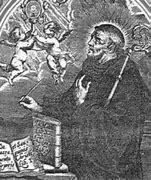
Present In Faith?
It is not a physical manifestation but is a spiritual reality. He denies the real presence of Christ in the Eucharist and insists that Christ is present in faith.
In these two men we see a conflict of two worldviews. In Ratramnus we see a separation from the sacramental worldview that had been firmly established. We see the separation of physical and spiritual realities in which God has interacted with man since the beginning of creation.
Slippery Slope Of Denying Doctrine
This separation has a domino effect and centuries down the road would manifest itself in humanism and a materialist worldview, though that was not his intention. In St. Paschasius we see that the physical contact with the risen Christ was part of what salvation was.
Through that physical contact of consuming him we came into union with the Holy one. He is in us working to transform us and make us like him.
Works Cited
Pohle, Joseph. “St. Paschasius Radbertus.” The Catholic Encyclopedia. Vol. 11. New York: Robert Appleton Company, 1911. 23 May 2018 <http://www.newadvent.org/cathen/11518a.htm>.
The post Ratramnus: The First Eucharistic Controversy Within The Church appeared first on William Hemsworth.
July 8, 2020
How Old Is Your Church? with Ken Litchfield
Apologist and author Ken Litchfield joins me on the program this week. He is the author of a great book titled “How Old Is Your Church”. We discuss his book and some common objections to Catholicism. He answers the question of what church did Christ establish and where we got the Bible. It is very informative.
About The Book-How Old Is Your Church?
This book is an introductory guide to the Catholic Faith. It is great guide for new Catholics, fallen away Catholics and cradle Catholics. It would be very useful supplement for a confirmation class or an RCIA class. This book explains what the Catholic Church teaches in plain language for the regular pew sitter.
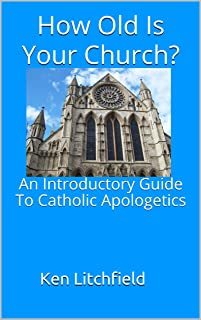 Ken’s Great Book!
Ken’s Great Book!It explains the Old Testament Jewish roots of Catholic teachings and the New Testament references for Catholic teachings. As a bonus I provide quotes from early Christian teachers that give the a Catholic interpretation of the Old and New Testaments before 500AD.
The book is laid out to take a person from pagan to Catholic in 100 pages or an individual chapter can be read on its own. This book is a first step into the field of Catholic Apologetics with plenty of references for further study.
Check out the book here. Listen to the audio here or watch the YouTube video below.
The post How Old Is Your Church? with Ken Litchfield appeared first on William Hemsworth.
July 5, 2020
Polycarp: The Forgotten Apostolic Father
St. Polycarp is a personal hero of mine. We can learn so much from his life, but why is he often overlooked? There are a couple reasons for this, but perhaps the most important is that only one of his writings has survived.
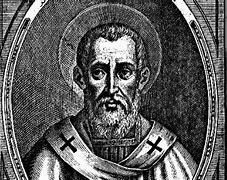 St. Polycarp Bishop of Smyrna
St. Polycarp Bishop of SmyrnaImportance of Polycarp
St. Polycarp was bishop of Smyrna and live from 69-156 AD. His letter to the Philippians is important because it teaches humility and Christian piety. It is also interesting in that this letter directly quotes Tobit as scripture. In the regard it is important to issues regarding the canon.
Taught by the Apostle John, he was friends with St. Ignatius of Antioch. In fact, the last letter that St. Ignatius was to St. Polycarp. The great Irenaeus, who wrote the great work Against Heresies, was taught and mentored by the great saint.
Martydom
His martyrdom also carries with it many apologetics applications. The great saint was burned at the stake, but prior to that he showed hospitality to his captors. After his death his bones were collected and venerated on the anniversary of his death.
Below is an interview I did on Hands on Apologetics with Gary Michuta that aired on June 26 on Virgin Most Powerful Radio. Enjoy.
The post Polycarp: The Forgotten Apostolic Father appeared first on William Hemsworth.
July 1, 2020
Scott Hahn: Interview About His Great New Book
Dr. Scott Hahn is on the program to talk about his new book. We discuss the origins of the book, the importance of the body in life and death, the vital part the Eucharist plays in our body as well as our faith, and how early Christian’s treated the body and how that changed western civilization. The book is fascinating and packed with history from the early church, the church fathers, and scripture. I can’t recommend it enough.
The work of Dr. Hahn was a major factor in my conversion while I was in Seminary. It was pleasure speaking with him.
Checkout the book here.
Also visit Dr. Hahn’s apostolate The Saint Paul Center For Biblical Theology at www.stpaulcenter.com.
[image error]Dr. Hahn’s New Book
About the Book (From Amazon description):
As Catholics, we believe in the resurrection of the body. We profess it in our creed. We’re taught that to bury and pray for the dead are corporal and spiritual works of mercy. We honor the dead in our Liturgy through the Rite of Christian burial. We do all of this, and more, because when Jesus Christ took on flesh for the salvation of our souls he also bestowed great dignity on our bodies.
In Hope to Die: The Christian Meaning of Death and the Resurrection of the Body, Scott Hahn explores the significance of death and burial from a Catholic perspective. The promise of the bodily resurrection brings into focus the need for the dignified care of our bodies at the hour of death. Unpacking both Scripture and Catholic teaching, Hope to Die reminds us that we are destined for glorification on the last day. Our bodies have been made by a God who loves us. Even in death, those bodies point to the mystery of our salvation.
You can listen to the podcast here
Or watch it here
The post Scott Hahn: Interview About His Great New Book appeared first on William Hemsworth.
June 30, 2020
Covenant, Old Testament, And Christ As Fulfillment
Throughout the Old Testament there are several instances of God establishing a covenant. He did so with Adam in the Garden, with the nation of Israel through Moses where the Law was delivered, with Noah after the great flood, with Abraham and his descendants, and lastly with King David.
These covenants are a part of salvation history that prepared the world for the coming of the Messiah. Each one of these covenants was important and significant, and each one was fulfilled in the person of Jesus Christ. This covenant is known as the new covenant, and it is everlasting. Regarding this the Catechism of the Catholic Church states,
“God has revealed himself fully by sending his own Son, in whom he has established his covenant forever. The Son is his Father’s definitive Word; so there will be no further Revelation after him” (CCC para 73).
Adamic Covenant
The Adamic covenant is the first that the Lord had established. As its name states, it was established with our first parents on behalf of all humanity. We read in Genesis 1:26-31 about the creation of mankind, and how God rested on the seventh day. The number seen in the Hebrew language is the number of covenant.
However, there is a second part of the covenant that applies after the fall. God gives the first Gospel pronouncement which is known as the protoevangelium. Genesis 3:15 states, “I will put enmity between you and the woman, and between your offspring and hers; he will strike your head, and you will strike his heel” (NRSV). Christ is the fulfillment as his death, burial, and resurrection redeemed us from the sin of our first parents.
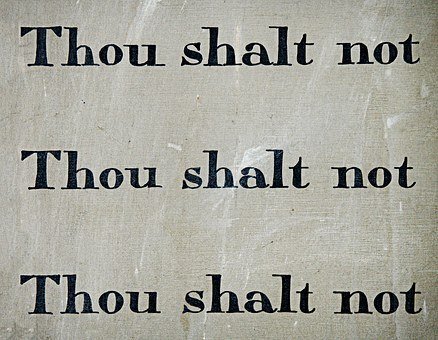
With Noah
After the great flood mentioned in Genesis, God made a covenant with Noah never to destroy the Earth with water again. The rainbow became a sign of the covenant that God made with Noah. This is seen in Genesis 9:13 which states, “I have set my bow in the clouds, and it shall be a sign of the covenant between me and the earth” (NRSV). Man will still struggle with sin, but Christ gives strength in the battle. The Vatican II document Gaudium Et Spes states, “But the Lord Himself came to free and strengthen man, renewing him inwardly and casting out the prince of this world”.It also brought into focus the issue of capital punishment in Genesis chapter nine. It took on a new meaning when Christ was crucified. The covenant is for all time and for all people, as is the sacrifice of Christ.
With Abraham
God continued in his promise and made a covenant with Abraham. Genesis 12:2 states, “I will make of you a great nation, and I will bless you, and make your name great, so that you will be a blessing” (NRSV). God promised Abraham descendants as numerous as the stars, and this included those by adoption.
With Moses
This was fulfilled in Christ, because having faith in Christ we adopted sons of Abraham as Galatians 3:29 states. In the Mosaic covenant, God made a covenant with the people of Israel. Through the leadership of Moses, God freed His people from slavery, then made a covenant with them on Mount Sinai.
Christ fulfills the covenant by showing us how to live the law and calling to a higher standard of living as Christians. This can only be done through his grace and mercy.
With David
God also made a promise with King David and said that through his lineage the Messiah would be born. The promise can be seen in 2 Samuel 7:12-13 which states,
“When your days are fulfilled and you lie down with your ancestors, I will raise up your offspring after you, who shall come forth from your body, and I will establish his kingdom. He shall build a house for my name, and I will establish the throne of his kingdom forever” (NRSV).
In St. Augustine’s great work the City of God he equates King David to an Old Testament prefigurement of Christ. This covenant is fulfilled because he is proven to be in David’s lineage as is seen in Matthew Chapter one. It is a kingdom that will have no end.
The post Covenant, Old Testament, And Christ As Fulfillment appeared first on William Hemsworth.
June 26, 2020
A Brief Introduction To The African American Influence On Catholicism with Menny Thoughts
https://www.podbean.com/media/share/pb-hb2g7-e13cdf
This week popular blogger and podcaster Efran Menny of Menny Thoughts and the Priestly Passion joins me. We discuss, and barely touch the surface, of African American influence on Catholicism. Included is a great introduction to the great Saint Peter Claver, Bishop James Healy, Daniel Rudd, and Henriette Delille. So much great information. For more information check out the website of the National Black Catholic Congress at https://www.nbccongress.org/. Also check out the Menny Thoughts blog at mennythoughts.wordpress.com.
The post A Brief Introduction To The African American Influence On Catholicism with Menny Thoughts appeared first on William Hemsworth.
How Tetherball Is Like The Catholic Church
I will begin today’s post by comparing the structure of the Catholic Church to a somewhat “elementary” thing. Let me give you some word clues. Hopscotch. Foursquare. Kickball. Red Rover.
Before I confuse you anymore please let me briefly explain the context to why I am talking about children’s playground games and religion in the same paragraph.
In 2014-2015, I worked at a Catholic high school and taught Old and New Testament. On the day we discussed the epic first century saints Peter and Paul, I gave my students a simple analogy. A healthy Catholic Church is likened to a game of tetherball. To better help you understand what I mean precisely with that example please let us first discuss why Peter and Paul are important to Christianity.
Stability of the Rock
Matthew 16:16-19 has Peter clearly stating the identity of Jesus Christ and thereafter he is entrusted with the “keys to the kingdom of Heaven”. Catholics interpret this passage as hard and fast proof for the papacy. To cite Bishop Robert Barron in his book Catholicism [referring to Peter’s special insight], “And this knowledge did not come from Peter’s native intelligence or from an extraordinary education…It came as a gift from God, a special charism of the Holy Spirit.” (p. 121).
Thus, God chose a pope from the very beginning to be that stability upon we, as Catholics, can rely on.
If the Church had multiple heads its teachings would devolve into something ugly–like the multi-head monster in Greek myth– the hydra. In a similar way, the center-post in a tetherball game provides stability for the game to happen.
Creativity of a Theologian

Now let us turn our attention to St. Paul. While the popes enjoy the office of St. Peter and provide stability to the Catholic Church, having this Petrine element alone would make Her teachings dry and rocky. Thus, to balance out the papacy there is a need for theology to make the Church healthy.
After Paul’s conversion in Acts 9 until the end of the book, the saint is literally always on the move. As I told my students, “Paul does not have biblical ADD, but rather he was the spark of life that started the early Christian churches”. Citing from Bishop Barron again, “Paul stands for mission, the engagement of the culture and proclamation. Every missionary, teacher, preacher, and theologian, is, in this sense, a son or daughter of Paul.” (p. 141).
Paul represents an archetype within the Catholic Church to adapt to different times and cultures. He represents the spunk that enlivens the Church. Going back to the tetherball analogy the rope and ball provide the excitement for the playground game.

Structure + Flexibility= Healthy Church
A healthy Church needs both structure (papacy) and flexibility (theology). So too does a tetherball game needs the center-post= [representing the papacy/Petrine element] and the rope and ball= [representing theology/Pauline element]. The schoolyard game would be pointless if a center-post did not exist to keep the ball close for the players to bat around, but at the same time a game consisting of only a metal pole would be stagnant and boring– similar to what would have to the Catholic Church without the dynamic element St. Paul brought in the first century and whose memory represents today.

To answer the question from the title: Which playground game is God’s favorite? I would imagine that God has all the time in the world to try them all and find them equally enjoyable, but if I had to venture a guess, I would pick tetherball! 
June 23, 2020
Catholicism: African American Influence In The US
This week popular blogger and podcaster Efran Menny of Menny Thoughts and the Priestly Passion joins me. We discuss, and barely touch the surface, of African American influence on Catholicism. Included is a great introduction the great Saint Peter Claver, Bishop James Healy, Daniel Rudd, and Henriette Delille. So much great information. For more information check out the website of the National Black Catholic Congress at https://www.nbccongress.org/. Also check out the Menny Thoughts blog at mennythoughts.wordpress.com.
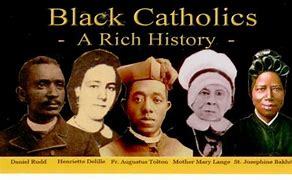 African Americans Greatly Contributed (and continue to do so) To Catholicism in the United States. Image from the Archdiocese of Cincinatti
African Americans Greatly Contributed (and continue to do so) To Catholicism in the United States. Image from the Archdiocese of CincinattiThe post Catholicism: African American Influence In The US appeared first on William Hemsworth.
June 17, 2020
Hostile Enemies Of The Church Prove Christianity
In this week’s episode Catholic apologist Gary Michuta comes on to discuss his book Hostile Witnesses. We discuss a few historical figures and events that had the opposite effect than intended. We discuss Pontius Pilate, Gamaliel, the Quran, and Martin Luther and how they proved the Catholic faith. Check out Gary’s book on Amazon.
Listen to the interview here.
About Hostile Witnesses
In Hostile Witnesses, Michuta looks at dozens of Christianity s most notorious foes beginning with the New Testament and through the twentieth century and draws from their antagonistic words and deeds surprising testimony to gospel truths.
From the Pharisees to the Nazis, from the Crusades to the Reformation, he presents a parade of skeptics, heretics, pagan powers, and rival sects: each taking a turn in the witness s chair and giving an unexpected but compelling account in favor of Christ.
Rich in research and written with clarity and force, Hostile Witnesses is a unique contribution to Catholic apologetics. And one that speaks with special urgency to a modern world in which the Faith is once again under attack.
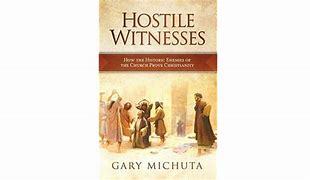
About Gary Michuta
Gary Michuta has been a popular speaker on Catholic apologetics and evangelization for more than twenty years. Through parish talks, seminars, and online classes he has helped hundreds of Catholics better understand and explain their Faith.
Gary is a former editor of Hands On Apologetics Magazine and has written five books, including How to Wolf-Proof Your Kids, Why Catholic Bibles are Bigger, Making Sense of Mary, and The Case for the Deuterocannon. He also writes the award-winning column Behind the Bible for the Michigan Catholic newspaper.
Gary and his wife, Christine, live in southeast Michigan with their three children, and he teaches middle-and high-school-level apologetics courses online for Homeschool Connections.
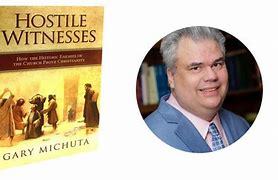
Information about the book and author are from Amazon.
Learn more about Gary at his website handsonapologetics.com or garymichuta.com
The post Hostile Enemies Of The Church Prove Christianity appeared first on William Hemsworth.
William Hemsworth's Blog
- William Hemsworth's profile
- 7 followers



